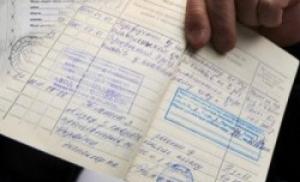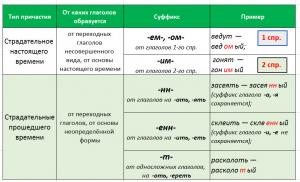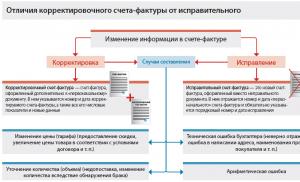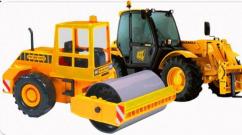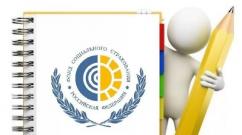Accounting and tax accounting of fixed assets. Fixed assets: postings
Recognition of fixed assets as depreciable in accounting and tax accounting depends, among other things, on their cost. We will tell you about the features of accounting for fixed assets up to 100,000 rubles in 2019 for accounting and profit tax purposes in our consultation.
Accounting for fixed assets worth up to 100,000 rubles
In accordance with clause 5 of PBU 6/01, a cost criterion is established in accounting, which allows assets that meet the criteria of fixed assets (clause 4 of PBU 6/01) to be taken into account not as fixed assets, but as inventories. However, this cost limit is not 100,000 rubles, but 40,000 rubles. However, this criterion may be lowered. And if desired, all objects that meet the conditions for recognizing them as fixed assets can be accounted for in account 01 “Fixed assets”, regardless of their cost (Order of the Ministry of Finance dated October 31, 2000 No. 94n).
In any case, it is important to take into account that fixed assets worth more than 40,000 rubles cannot be reflected in accounting as materials, even if this is provided for in the Accounting Policy. Therefore, fixed assets from 40,000 to 100,000 cannot be accounted for by the organization in account 10 “Materials”. At the same time, when we say “from 40,000,” we mean more than 40,000, since an object with an initial cost of exactly 40,000 rubles can still be taken into account as inventories.
Therefore, accounting for expenses of property worth less than 40,000 rubles will be carried out in accordance with the procedure established for.
Fixed assets up to 100,000: tax accounting
Fixed assets less than 100,000 rubles are not considered depreciable property in tax accounting (Clause 1, Article 256 of the Tax Code of the Russian Federation). Accordingly, when such property is used, its value will be reflected as part of expenses associated with production and sales, or non-operating expenses. The procedure for tax accounting of fixed assets worth less than 100,000 rubles will depend on the type of property and its purpose. Strictly speaking, property worth no more than 100,000 rubles for tax accounting purposes is not recognized as fixed assets at all (
Each company strives to take into account the costs incurred for the purchase or creation of non-current assets when calculating income tax. However, for one category of property, a one-time write-off of the full cost of the object is allowed, while for another, attribution to costs is carried out gradually. Tax law establishes a minimum value of assets, which makes it possible to classify them as fixed assets. At the same time, the approved limit on fixed assets did not change in 2017. For the purposes of recognizing company property in accounting as subject to depreciation, its value must, in accordance with the requirements of PBU 6/01, exceed 40 thousand rubles.
Limit on the value of fixed assets in 2017: accounting
All criteria for compliance of a non-current asset with the standards defined by PBU must be achieved in the organization’s accounting. Thus, assets with a useful life exceeding one year and acquired not for resale should be classified as fixed assets. One of the important indicators that allows not so much to include property in the fixed assets, but to ensure the systematic write-off of its value using the depreciation method, is the limit on the value of fixed assets (no changes in 2017).
Based on PBU 6/01, fixed assets include non-current assets with a value exceeding 40 thousand rubles. As a result, all objects, the acquisition costs of which do not exceed the specified amount, are included in the inventory and are subject to attribution to expenses at a time.
Limit of fixed assets in 2017: tax accounting
Unlike accounting for accounting purposes, tax accounting contains other requirements for limiting the value of fixed assets. Since 01/01/2016, Russian taxpayers have been given the opportunity to take into account assets in NU as an object of accumulation of depreciation with a value of 100 thousand rubles. and higher. Consequently, in tax accounting, assets worth up to 100 thousand rubles, which organizations and entrepreneurs include in the inventory, require immediate write-off. This requirement is relevant only for those operating systems that were accepted for accounting after 01/01/2016.
How did the limits on fixed assets objects adopted in National Accounting and Accounting affect accounting? Mainly, the resulting discrepancy contributes to the emergence of temporary differences. The problem is connected precisely with the accounting of inexpensive objects, which since 2016 have been written off differently in these accounting systems. The methodology for calculating income tax involves reflecting temporary differences in the accounting accounts. Until the end of the useful life of the organization, a deferred tax liability arises, listed in the account of the same name 77.
Increasing the limit on the value of fixed assets in tax accounting contributes to the accelerated write-off of the value of the asset, thereby reducing the tax burden when calculating income tax. However, the need to reflect temporary differences in accounting causes many difficulties for accountants.
Anna Gorokhova, leading expert methodologist at BDO UniconOutsourcing
Changes in accounting for fixed assets in 2017 are associated with the introduction of the new All-Russian Classifier of Fixed Assets OK 013-2014 (SNA 2008). Resolution of the Government of the Russian Federation dated 01.01.2002 No. 1, which approved the Classification of fixed assets for tax accounting purposes, was also amended (resolution of the Government of the Russian Federation dated 07.07.2016 No. 640). In some cases, the amendments will affect the determination of the useful life of newly acquired property.
Let us recall that for tax accounting purposes, from January 1, 2016, property with a useful life of more than 12 months and an original cost of more than 100,000 rubles is considered depreciable. The new limit applies to property put into operation since 2016. In accounting, the same limit remained - 40,000 rubles.
Depreciable property is distributed among depreciation groups in accordance with its useful life (SPI) (clause 1 of Article 258 of the Tax Code of the Russian Federation).
From January 1, 2017, organizations will determine depreciation periods for fixed assets according to the new Classifier of fixed assets OK 013-2014 (SNS 2008) (approved by order of Rosstandart dated December 12, 2014 No. 2018-st).
The old Classifier of fixed assets OK 013-94, which determined one of the ten groups of depreciable property, will be cancelled.
In the new Classifier of Fixed Assets, the codes of fixed assets objects have completely changed: their numbering has changed. The names of objects have also partially changed. In this regard, changes were made to the Decree of the Government of the Russian Federation (Regulation of the Government of the Russian Federation dated 01.01.2002 No. 1 (hereinafter referred to as Resolution No. 1)), which approved the Classification of fixed assets for tax accounting purposes (Regulation of the Government of the Russian Federation dated 07.07.2016 No. 640). These changes also come into force on January 1, 2017.
Classifier of fixed assets and transition keys
In order to simplify the transition to the new Classifier of Fixed Assets, Rosstandart issued an order “On approval of direct and reverse transition keys between the editions of OK 013-94 and OK 013-2014 (SNS 2008) of the All-Russian Classifier of Fixed Assets” (Rosstandart order dated April 21, 2016 No. 458), which contains tables of correspondence between old and new OKOF codes (the direct transition key establishes the transition from OK 013-94 to OK 013-2014 (SNA 2008), and the reverse transition key, on the contrary, establishes the transition from OK 013-2014 (SNA 2008 ) to OK 013-94).
For most objects, the name remains the same, only the code number and the name of the subgroup have changed.
For example, according to the new Classification, the 2nd depreciation group (with a useful life of more than two years and up to three years inclusive) will include computers (the subgroup “Other office machines” with code 330.28.23.23 includes: personal computers and printing devices for them ; servers of various capacities; network equipment for local area networks; data storage systems; modems for backbone networks).
According to the current (old) Classifier, this subgroup (which includes personal computers and printing devices for them, servers of various capacities, network equipment for local computer networks, data storage systems, modems for local networks, modems for backbone networks) also belongs to 2- th depreciation group with a useful life of more than two years and up to three years inclusive. But it is called “Electronic computer technology” and has code 14 3020000.
In some cases, specific types of fixed assets are not included in the Classifier of fixed assets OK 013-2014, and then compliance must be established based on the characteristics of similar or similar objects.
The Classifier of Fixed Assets OK 013-2014 (SNA 2008) provides a definition of fixed assets. These are manufactured assets that are used repeatedly or continuously over a long period of time, but not less than one year, to produce goods and provide services. Some of the positions of the current OK 013-94 do not correspond to the new definition of fixed assets. For them, in the “Item Name” column of the correspondence table, an entry is made: “They are not fixed assets.”
For example, microphones, loudspeakers, headphones, headsets with code 14 3230200, microphones with code 14 3230201, loudspeakers with code 14 3230202, drilling and slotted hammer drills with code 14 3315443, line equipment rooms, amplifiers and low-frequency stands with code 14 3222400 now are not fixed assets.
The accountant uses the codes of the Classifier of Fixed Assets when filling out Federal Statistical Observation Form No. 11 “Information on the availability and movement of fixed assets (funds) and other non-financial assets.” Also, in some cases, the determination of the right to use the UTII system may depend on the OKOF code.
But first of all, the All-Russian Classification of Fixed Assets is used to determine the depreciation rate of fixed assets in tax accounting, since in accordance with the Tax Code, taxpayers, when determining the depreciation group in which depreciable property should be included, are required to use the Classification of Fixed Assets approved by Resolution No. 1. A this Classification, in turn, is based on the OKOF classifier.
Classifier of fixed assets for determining the depreciation group and SPI
The useful life is the period (number of months) during which the company expects to use the asset and receive economic benefits from it. Depending on this period, in tax accounting they belong to one or another depreciation group.
When accepting an object for accounting, each organization independently establishes the SPI for the date of its commissioning. But before establishing the SPI for the acquired fixed asset, you need to determine which of the ten depreciation groups the object belongs to.
Each group has a minimum and a maximum. An organization can select SPI within a specific depreciation group in which the fixed asset is included.
If the fixed asset belongs to a type that is not named in the Classification approved by the Government of the Russian Federation, then the SPI for such an object should be established on the basis of technical documentation or manufacturers’ recommendations. If the technical documentation does not contain SPI, the organization can use data from the Classifier of Fixed Assets. The fixed asset code must be found in OKOF and the depreciation group must be determined according to this code (code ranges in the Classifier are given in addition to the names of fixed assets in the explanation column).
Application of the Classifier of fixed assets in accounting
Resolution No. 1, which approves the Classification of fixed assets for tax accounting purposes since 2017, states that the Classification must be applied for tax accounting purposes. The text of this resolution excludes the provision that the Classification can also be used for accounting purposes. This is quite natural, since tax legislation should not regulate accounting issues. But does this mean that Tax Classification can no longer be used in accounting?
The useful life in accounting is the period during which an item of fixed assets should bring economic benefits to the organization, that is, income. In accordance with PBU 6/01 “Accounting for fixed assets” (approved by order of the Ministry of Finance of Russia dated March 30, 2001 No. 26n), the SPI of an object of fixed assets is determined based on:
the expected life of the facility in accordance with its expected productivity or capacity;
expected physical wear and tear, depending on the operating mode (number of shifts), natural conditions and the influence of an aggressive environment, the repair system;
regulatory and other restrictions on the use of this object (for example, the rental period).
Thus, in accounting, an organization can independently determine SPI, without relying on any norms or classifiers.
There is no prohibition on the use of the Classifier of fixed assets established for tax purposes in accounting. Most companies use this Classification for accounting purposes, enshrining this procedure in the accounting policies of the organization. This option is chosen to optimize accounting work, bring accounting and tax accounting closer together (including in order to avoid the need to apply temporary differences).
SPI of used fixed assets
New codes and a new Classification will apply to fixed assets acquired after January 1, 2017. How to determine SPI if an organization added fixed assets that were in use to its accounting records in 2017?
We would like to remind you that the company has the right to independently establish in tax accounting the procedure for determining SPI for such fixed assets, and we can proceed from the period that (clause 7 of Article 258 of the Tax Code of the Russian Federation):
1) determined by Classification (that is, as a new object);
2) determined according to the Classification, but reduced by the period of actual use by the previous owner (the service life of the fixed asset by the previous owner must be documented, for example, by an act in the OS-1 form);
3) established by the previous owner and reduced by the period of its actual use by this owner (these periods must also be documented).
Such options are provided for companies using the straight-line depreciation method. When using the non-linear method, the calculation of depreciation does not depend on the useful life of the fixed asset.
In the first two cases, in 2017, organizations will have to apply a new Classification (of course, this only matters if the SPI of the object has changed in accordance with the new Classification).
If the period of actual use of the fixed asset by the previous owner turns out to be equal to the period determined in accordance with the Classification, or exceeds this period, the company has the right to independently establish SPI, taking into account safety requirements and other factors.
Application of the Fixed Asset Classifier when changing the SPI
As a general rule, the SPI is revised when there is an improvement in the initially established standard indicators of the functioning of the facility as a result of completion, additional equipment, reconstruction, or modernization.
Let us recall that in tax accounting, an increase in SPI can only be made within the time limits established for the depreciation group in which the fixed asset was previously included. If the useful life after reconstruction, modernization or technical re-equipment has been increased, the organization has the right to charge depreciation at a new rate, calculated based on the new useful life of the fixed asset (letter of the Ministry of Finance of Russia dated 08/04/2016 No. 03-03-06/1 /45862). But such a recalculation of the depreciation rate will lead to the fact that the object will depreciate longer, therefore for the organization in this case it is more profitable to charge depreciation according to the previous rates.
If, after modernization (reconstruction), the initial cost of the object has changed, but the SPI remains the same, then the depreciation rate when using the linear method in tax accounting cannot be revised, and at the end of the SPI, the fixed asset will not be fully depreciated. However, according to the explanations of the Ministry of Finance of Russia, organizations in this case are allowed to continue to charge depreciation using the straight-line method until the cost of the fixed asset is fully repaid and after the end of the joint venture, if it was not revised after the modernization (reconstruction) of the fixed asset (letter of the Ministry of Finance of Russia dated July 5, 2011 No. 03-03- 06/1/402, dated 09/10/2009 No. 03-03-06/2/167, dated 02/12/2009 No. 03-03-06/1/57).
When, after modernization (reconstruction), the technical characteristics of an object have changed so much that it begins to comply with the new OKOF code (old and new codes will have to be analyzed in 2017), the object should be considered as a new fixed asset. In this case, its initial cost and SPI will need to be determined again, using a new Classifier.
And in accounting, SPI is an estimated value. Therefore, the organization has the opportunity, without taking into account any standards, to change (clarify) the SPI in cases such as, for example, modernization or reconstruction, with such adjustments reflected in accounting and reporting. At the same time, the possibility of revising the SPI as an estimated value must be fixed in the accounting policies of the organization.
Almost every company has assets that are considered to be of low value. You can find out what exactly applies to low-value fixed assets in 2017 and how to take such fixed assets into account in the following article.
All organizations acquire for themselves some objects that they plan to use for more than a year. These objects:
- Used for a long time;
- They are used for the manufacture of goods, or for the management needs of a company.
The organization does not intend to sell such OS in the future. She's going to make a profit from them.
The legislation states that if the price of an object does not exceed one hundred thousand rubles, then in accounting it is allowed to be taken into account as inventory. It is precisely this kind of property that is of little value in 2017.
Reflection in accounting policies
The company's accounting policies for accounting purposes must contain the following provisions:
- Establishing a price limit within which low-value fixed assets are allowed to be classified as low-value property. This limit should be no more than one hundred thousand rubles. If it is not set, it will automatically be considered equal to zero. Therefore, all property will be considered fixed assets.
- A method for valuing low-value objects upon their disposal. Several options are possible:
- At the cost of each unit;
- At average cost;
- At the cost of inventories purchased first in time.
- What primary documentation will accompany the movement of low-value fixed assets: acceptance for accounting, putting into use, disposal, checking availability. The accounting policy must contain documentation forms.
- To account for low-value fixed assets, the chart of accounts will need to include:
- Subaccount 10 of the “materials” account, which will show the movement of low-value objects for accounting purposes;
- An off-balance sheet account against which you can check the actual availability of low-value fixed assets.
Transactions for the acquisition of low-value objects
In the case when a company buys low-value operating systems, the following entries are made in accounting:
- D10 – K60 – acceptance of an object for accounting on the basis of documentation received from the seller;
- D19 – K60 – reflection of the submitted VAT based on the invoice;
- D20, 26, 44 – K10 – transfer of the object for use, one-time write-off of the price for expenses;
- D68 – K19 – acceptance of VAT amount for deduction;
- D60 – K51 – implementation of non-cash payments with the seller.
Postings for disposal of low-value fixed assets
In the event that low-value property is removed from the company’s records, the following entries are made in the accounting department:
- D10 – K91-1 – acceptance for accounting of a previously written-off item at the market price as of the date of capitalization;
- D62 - K91-1 - recognition of other income on the date when ownership of the object transferred to the buyer;
- D91-2 – K68 – accrual of VAT payable to the budget;
- D51, 50 – K62 – receiving money from the buyer;
- D91-2 – K10 – recognition of another expense when writing off the price of an object.
Off-balance sheet accounting
As a rule, accounting for low-value objects put into use is carried out on off-balance sheet accounts. For example, you can enter account 012 (low-value objects). Thanks to this you will be able to:
- Monitor the actual availability of low-value objects after they are written off;
- Check which employees are responsible for certain objects;
- If additional costs associated with the use of “low value”, confirm their legal validity.
Fixed assets (FPE) are available in any enterprise, both small and large. Otherwise, the work of the organization is simply impossible. What fixed assets are, transactions for them, rules for accounting and depreciation and other important points will be discussed in this article.
Definition
OS includes property and items that take part in the organization’s activities (production or trade). Key point: they retain their shape almost unchanged. They can also be rented out.
Let's look at fixed assets. Examples will help us with this. Let's take, say, a computer. Nowadays, almost no workplace can do without a PC. It is the subject of labor, without it the employee will not be able to fulfill his duties. However, a computer may not be the main tool if we are talking about a company that sells computer equipment.
The following examples are an office building, a company car, equipment. These items also take part in the production process at the enterprise. But, for example, scissors cannot be classified as a fixed asset, despite the fact that they are also a tool of labor. These are materials.
Indeed, determining whether a particular property is a fixed asset or not is not always a simple task. But let's try to figure it out.
Criteria for the allocation of fixed assets
To simplify, a number of features have been developed that an operating system should have from an accounting point of view. The issue is described in detail in PBU 6/01.
Criteria:
- The property was acquired in order to solve production or management problems at the enterprise, or for lease.
- The service life of the object is a year or more.
- The property was not purchased for the purpose of selling it.
- The object has the ability to bring benefits to the company and was acquired in order to generate income.
In tax accounting there is also a cost criterion: over 40 thousand rubles. There is no such requirement in accounting, but in order not to create differences in accounting and additional inconveniences, the cost criterion is used in both cases. Everything purchased at a price of less than 40 thousand rubles can be classified as inventory. For management accounting purposes, the principles for defining an object as an operating system can be developed by the organization itself.

It is extremely important to correctly allocate objects to the group of fixed assets. Mistakes can lead to incorrect assessment of property taxes and, consequently, to troubles when audited by regulatory authorities.
Let's consider accounting for fixed assets and postings in stages - starting with the appearance of equipment at the enterprise and ending with disposal.
Reflection of receipts in accounting
Let's now look at the accounting entries for fixed assets. Two accounts are used for accounting: 01 and 08. Both accounts are active.
The peculiarity of accounting is that upon receipt, account 01 “OS” is never used immediately. The entry is made first to the debit of the suspense account 08.
- 08 -60 – this is how the acquisition of property is reflected;
- 01 -08 – a record that the OS was put into operation.
The source of receipt may not necessarily be the supplier. Fixed assets can be donated - 08 -98, contributed as part of the authorized capital - 08 -75. It can be built - 08 -60.
The primary documents are OS-1, OS-1a, OS-1b, OS-14, OS-15. For each received object, an inv. must be filled out. card in the form OS-6, OS-6a, OS-6b.
If an object, for example, a computer, costs less than 40 thousand rubles, then its receipt is recorded as a debit to account 10, and then immediately written off as expenses (account 91). This is the difference between fixed assets and inventories. The cost of fixed assets is written off as expenses gradually through depreciation, and the cost of inventories immediately.
Depreciation calculation
In order for the cost of the object to be transferred to expenses gradually, depreciation of fixed assets has been developed. Let's look at the wiring in more detail. Account 02 is used for this purpose.
The essence of depreciation is that the cost of an operating system is distributed depending on its service life, which in other words is called useful use, and is written off monthly as an expense. For this purpose, 10 depreciation groups have been developed. The accountant must determine which of them the fixed asset belongs to independently and determine the term of the fixed asset.
There are four methods for calculating depreciation; the organization indicates the one chosen in its accounting policy. Again, in order to avoid differences between accounting and tax accounting, linear accounting is most often chosen. That is, they divide the cost by the number of months of useful use and write it off as expenses in equal shares.
Depreciation of fixed assets has the following form: 20 (44) - 02. After the service life has passed, according to Kt 02 an amount equal to the original cost of the property will be collected. Then the accountant will make an entry 02 - 01. The fixed assets will be completely depreciated and will no longer be on the balance sheet.

Sale of objects
Despite the fact that one of the criteria for classifying property as fixed assets states that it is not for sale, this does not mean that it is prohibited to sell it. The organization has the right to replace property with newer ones and get rid of what has become unnecessary. Let's look at how the sale of fixed assets, transactions and documents are reflected.
The first step is to transfer to account 01 all accrued depreciation from account 02 (Dt 02 Kt 01). The difference between the purchase and depreciation will be the residual value of the property. It is transferred to account 91 (Dt 91 Kt 01). The amount of proceeds from the sale is recorded as Dt 62 Kt 91. VAT is charged - Dt 91 Kt 68.
Carrying out an inventory
For accounting, it is extremely important that accounting data agrees with actual information. Therefore, inventories are carried out regularly. It is especially important to do this before the balance.
Upon receipt, a card is created for each fixed asset and an inventory number is assigned. An inventory is compiled according to the INV-1 form, into which the data is transferred: name, assigned numbers. The commission compares the inventory with the actual data. The results are reflected in accounting by the corresponding entries.

Movement of fixed assets
The entire array of property of the enterprise is not stable. Some changes are constantly happening in it. Objects arrive, leave for various reasons, and move within the organization. This whole process is called “movement of fixed assets”.
For assessment, coefficients have been developed, for example, disposals. This indicator allows you to understand the speed at which fixed assets become obsolete, and how long it will take for the equipment to completely wear out and require its replacement.

The most detailed picture of the state of property in an enterprise is provided by a report called the balance sheet of fixed assets.
Modernization and renovation: what is the difference?
When equipment becomes obsolete, there are two paths you can take. The first is to write off the old and purchase a new one, the second is to modernize. It is very important to distinguish it from repair.

The difficulty lies in the fact that it is not always possible to understand from the primary documents what kind of work was carried out. But the costs of repairs and modernization are distributed differently. An error can lead to incorrect tax calculations, which can be dangerous.
The essence of the repair is that the main product does not become better than it was before, it only returns its properties. Let's say the computer breaks down and its monitor burns out. They bought him a new one instead of the old one. This is a renovation.
Modernization improves fixed assets. Examples: The computer as is is too slow, but is still in good condition. Therefore, it was decided not to replace it completely, but only individual parts that affect the speed. As a result, the equipment began to function faster - this is modernization.
There is a difficult moment. Equipment, especially computer equipment, becomes obsolete quickly. It is no longer possible to replace a broken part with a similar one after just a couple of years; they are simply no longer produced, only with improved characteristics. How then? Wanted a renovation, but got a modernization? If parts with the same parameters really do not exist, then such a replacement will still be considered a repair, but in general, there are indeed many ambiguous points in this matter. They are solved in each individual case individually.
Modernization and repair: wiring
The difference in definitions has been sorted out, and is now reflected in accounting. We repair fixed assets: postings - Dt 20 (44) Kt 60. The debit account is selected depending on where the fixed asset belongs - to production or to sales. The record shows that repair costs are transferred to the enterprise's expenses immediately.
We are modernizing fixed assets: wiring - Dt 08 Kt 60, then Dt 01 Kt 08. Do you see the difference? Expenses for improvements increase the cost of equipment, which will then be gradually transferred to the enterprise's costs through depreciation.
Disposal of property
Above we considered only this type of disposal, such as the sale of fixed assets. The transactions were reflected in the accounting. However, in practice, equipment does not always “survive” until the end of its service life; it wears out or becomes obsolete much faster. What should I do? Such an object is not needed on the balance sheet, and I also don’t want to pay tax for it, so they write it off.

So, fixed assets have been written off, postings - 01/2 - 01/1 (the original price is written off), 02 - 01/2 (depreciation has been removed), 91 - 01/2 (the balances are written off as enterprise expenses).
If it was necessary to involve third-party organizations for dismantling, then entry 91-76 will appear. Suitable materials from the former fixed asset can be delivered to receipt 10-91.
Accounting for fixed assets, postings, primary documents is a separate section of accounting science. In large enterprises, this is done by a separate specialist. This area is considered quite complex, and therefore requires a specialist with good experience, developed expert opinion and high-quality knowledge of accounting details, and therefore the salary of such a specialist is higher.
